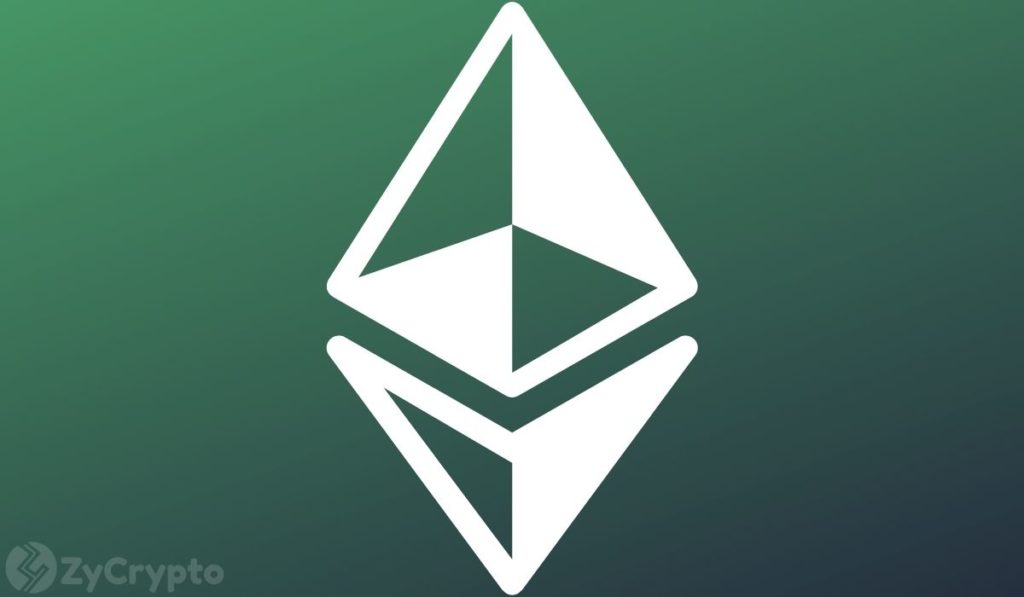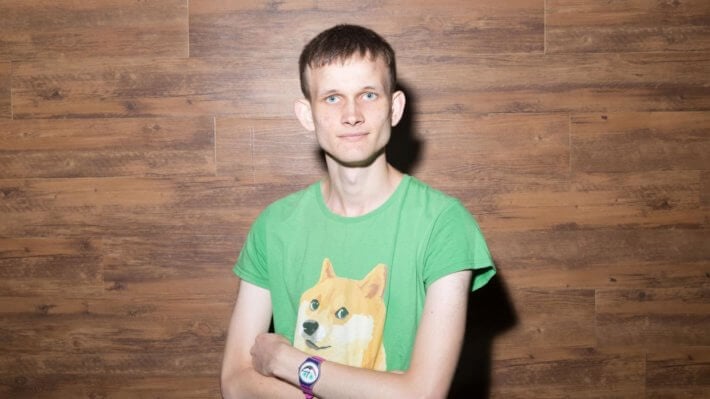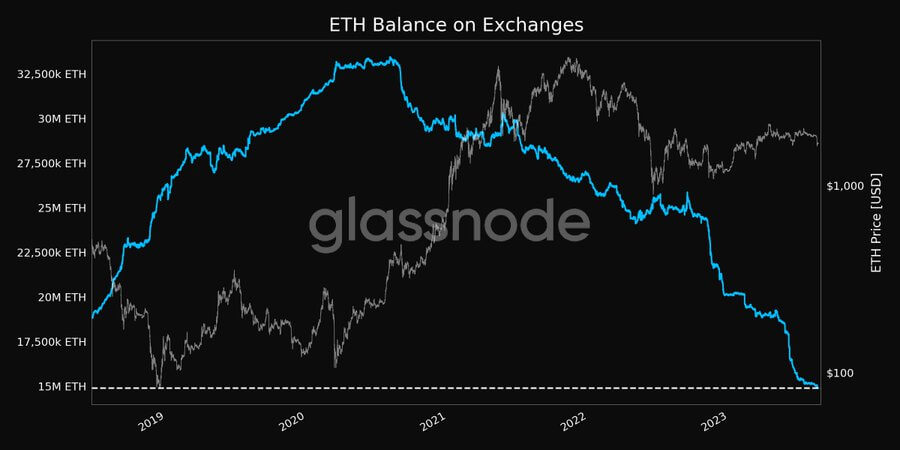2024-10-21 14:43 |
Ethereum, the second-largest blockchain after Bitcoin, has always been a beacon for decentralized applications (dApps) and smart contracts. Its vision, led by founder Vitalik Buterin, extends far beyond cryptocurrency—it aims to become a globally-scalable, decentralized world computer.
In his second recent post on the future of Ethereum, called “Possible Futures of the Ethereum Protocol, Part 2: The Surge,” Vitalik outlines the next phase in Ethereum’s evolution, focusing on scalability and long-term development. The post reflects a technical yet ambitious roadmap, offering insights into how Ethereum will transform into a protocol capable of handling enormous demand while remaining decentralized and secure.
Ethereum’s Core VisionAt its heart, Ethereum is designed to be the base layer for a decentralized internet. Unlike Bitcoin, which focuses solely on being a digital currency, Ethereum supports complex decentralized applications through smart contracts, which are self-executing contracts with the terms directly written into code. This flexibility has made Ethereum the go-to blockchain for developers building decentralized applications, including decentralized finance (DeFi), non-fungible tokens (NFTs), and more.
However, Ethereum’s popularity has exposed its limitations, particularly when it comes to scalability. Ethereum can only process about 15-30 transactions per second (TPS) on Layer 1, which pales in comparison to traditional payment networks like Visa. This has led to high gas fees during periods of network congestion and limited Ethereum’s ability to be a global-scale infrastructure.
Go here to read our feature on the first post about Ethereum’s future.
The Surge: A Rollup-Centric Future“The Surge” refers to Ethereum’s plan to massively increase its scalability, primarily through Layer 2 solutions. Rollups are a key component of this strategy. Rollups bundle transactions off-chain and then submit them back to the Ethereum mainnet, significantly increasing throughput while maintaining security and decentralization. In Vitalik’s words, rollups can potentially boost Ethereum’s scalability to over 100,000 TPS. This is transformative, as it allows Ethereum to handle global-scale applications without compromising its decentralized ethos.
The Surge, 2023 roadmap edition, Source: Vitalik
Vitalik emphasizes that rollups are not just a temporary fix but a long-term solution for scaling. While Ethereum 2.0’s transition from proof-of-work (PoW) to proof-of-stake (PoS) with “The Merge” reduced energy consumption, it did little to improve scalability. Rollups, therefore, are seen as the next big milestone in Ethereum’s development, which is why Vitalik dubs this phase “The Surge.”
Data Availability Sampling (DAS)Another critical aspect of “The Surge” is Data Availability Sampling (DAS), a technology designed to address the data availability problem. In a decentralized network like Ethereum, it’s essential that all nodes can verify data without needing to store or download everything. DAS allows nodes to verify data without accessing the full dataset, improving both scalability and efficiency.
Vitalik highlights two forms of DAS in his post: PeerDAS and 2D DAS. PeerDAS is expected to enhance the trust assumptions in rollups, making them even more secure. The idea is that with DAS, Ethereum can handle a greater volume of data, allowing for faster and cheaper rollups without compromising decentralization.
Plasma and Other SolutionsWhile rollups are the star of the show, they are not the only solution to Ethereum’s scalability woes. Plasma, another Layer 2 solution, was one of the earlier proposals for off-chain scaling. Plasma creates “child chains” that process transactions separately from the main Ethereum chain, submitting only periodic summaries to the mainnet. While Plasma’s development has somewhat fallen behind rollups, Vitalik still sees it as part of Ethereum’s broader scalability toolkit.
Additionally, there’s discussion around data compression techniques and improvements in cryptographic proofs** that can further enhance the efficiency of rollups and other Layer 2 solutions. The idea is to compress as much data as possible while ensuring that all necessary information remains available for verification by Ethereum nodes. These technological improvements will likely play a crucial role in Ethereum’s journey toward higher throughput.
A diagram of a Plasma Cash chain. Transactions spending coin i are put into the i’th position in the tree. In this example, assuming all previous trees are valid, we know that Eve currently owns coin 1, David owns coin 4 and George owns coin 6.
One way (not the only way) to make an EVM plasma chain: use a ZK-SNARK to construct a parallel UTXO tree that reflects the balance changes made by the EVM, and defines a unique mapping of what is “the same coin” at different points in history. A Plasma construction can then be built on top of that.
Source: Vitalik
Trustlessness and DecentralizationOne of the recurring themes in Vitalik’s posts is the balance between scalability and decentralization. Many blockchain projects have chosen to sacrifice decentralization for higher throughput. For example, Solana can process thousands of transactions per second but requires powerful hardware to run a node, centralizing the network. Vitalik is adamant that Ethereum must maintain its commitment to decentralization, even as it scales.
Rollups and DAS are seen as ways to increase Ethereum’s capacity while preserving its decentralized nature. Unlike Solana or other high-performance blockchains, Ethereum’s scaling strategy ensures that anyone can run a node, securing the network in a truly decentralized manner. This is crucial to Vitalik’s vision of a blockchain that can support a global, permissionless financial system.
Security and Long-Term ConsiderationsWith greater scalability comes increased responsibility in terms of security. As Ethereum moves toward a rollup-centric future, ensuring the trustlessness of these systems becomes paramount. Rollups rely on cryptographic proofs to guarantee that off-chain transactions are legitimate when submitted back to Ethereum. While these systems have proven effective, they are not without risks. Vitalik acknowledges that maturing these technologies will require rigorous testing and iteration, particularly as they become more widely adopted.
Moreover, Vitalik discusses the long-term threat of quantum computing, which could potentially break the cryptographic primitives that secure Ethereum today. While quantum computing remains years away from becoming a tangible threat, Ethereum developers are already exploring post-quantum cryptography to future-proof the network.
What’s Next for Ethereum?The post concludes with a look at what lies beyond “The Surge.” Vitalik envisions a world where Ethereum is not just scalable but fully decentralized, secure, and sustainable. This vision includes not only scaling Layer 1 through rollups and DAS but also building more efficient consensus algorithms, improving developer tools, and fostering a thriving dApp ecosystem.
Vitalik’s roadmap is optimistic, but it is not without its challenges. Implementing rollups at scale, ensuring the security of Layer 2 solutions, and preparing for a quantum future are all complex tasks. However, if Ethereum can successfully navigate these hurdles, it will solidify its position as the backbone of Web3—a decentralized, user-controlled internet.
Ethereum’s journey is far from over, and “The Surge” marks the next significant phase in its development. By focusing on rollups and data availability sampling, Ethereum aims to scale while maintaining its core principles of decentralization and security. As the network evolves, Vitalik’s vision of a truly decentralized, global-scale infrastructure comes closer to reality. But this vision will only be realized through careful implementation, continuous innovation, and a commitment to the ethos that has driven Ethereum since its inception.
In the rapidly evolving blockchain space, Ethereum’s focus on scalability without compromise is what sets it apart. And if “The Surge” is successful, it could change the landscape of blockchain technology for years to come.
Similar to Notcoin - Blum - Airdrops In 2024
Ethereum (ETH) на Currencies.ru
|
|









